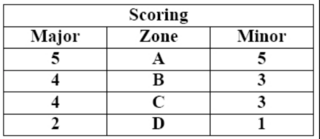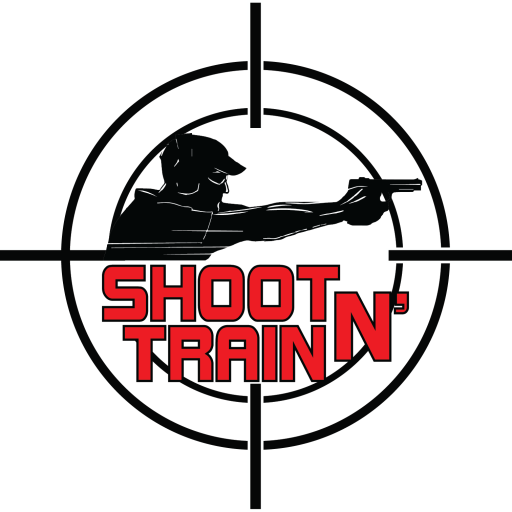Introduction to Hit Factor
The International Practical Shooting Confederation (IPSC) is an electrifying shooting sport that rigorously tests competitors’ shooting skills, speed, and precision. At the core of IPSC competition lies a unique scoring system known as the “Hit Factor.” In this article, we will explore the intricacies of IPSC scoring and the hit factor, clarifying the mechanics that make it a pivotal part of this thrilling sport.
Understanding IPSC
IPSC, founded in 1976 by Jeff Cooper, a distinguished firearms expert, and the pioneer of the “modern technique” of handgun shooting, simulates self-defense or combat scenarios by combining speed and accuracy. Competitors participate in a diverse array of courses of fire, challenging their skills in pistol, revolver, rifle, and shotgun disciplines.
IPSC Scoring: The Basics
IPSC scoring is distinctive, rewarding competitors who can effectively balance speed and accuracy. The primary aim is to hit targets while minimizing the time it takes to complete a course of fire. Here is a concise overview of how IPSC scoring functions:
- Targets: IPSC targets are typically cardboard silhouettes with scoring zones, replicating potential threats. Each target is scored using a numerical value system, with the center being the highest point value.
- Scoring Zones: IPSC targets have varying scoring zones, including A, C, and D zones. The A zone, located at the center of the target, provides the highest score, followed by the C zone. The D zone yields the lowest score.
- Time: Competitors are timed from the start signal to the last shot fired. The total time is a critical component in the hit factor calculation.
Hit Factor Explained (HF)
The HF is the crux of IPSC scoring, signifying how many points a shooter acquires per second of their performance (Points per second). It is a mathematical formula that combines the competitor’s time and score to determine their overall performance in a match.
The formula for calculating the hit factor is as follows:
Hit Factor = Total Stage Points / Time
Points in A Zone: 5 points
Points in C Zone: 3 points (4 points for Major)
Points in D Zone: 1 point (2 points for Major)

To provide a clearer understanding of the hit factor formula, let’s consider an example:
Example: A shooter participates in an IPSC stage using a minor ammo handgun. In this stage, the shooter scores as follows:
Hits in A Zone: 10
Hits in C Zone: 5
Hits in D Zone: 2
Total Time: 30 seconds
To calculate the hit factor for this stage, we will use the formula:
HF = (10 x 5 points in A Zone + 5 x 3 points in C Zone + 2 x 1 point in D Zone) / 30 seconds
HF = (50 + 15 + 2) / 30
HF = 67 / 30
HF ≈ 2.23
In this example, the shooter’s hit factor for the stage is approximately 2.23. This HF represents the number of points earned per second of performance.
Match Scoring
During an IPSC match, each competitor’s performance is recorded, and their HF is calculated for each stage. These individual stage hit factors are then used to determine the overall match ranking. The competitor with the highest combined hit factor across all stages emerges as the match winner.
Benefits of the Hit Factor System
The IPSC hit factor scoring system offers several advantages:
- Encourages Speed and Accuracy: The hit factor rewards shooters who can skillfully balance speed with accuracy, motivating competitors to shoot accurately while optimizing the time taken to complete a stage.
- Fairness: The hit factor system provides a level playing field for competitors of varying skill levels. Shooters can perform well by prioritizing accuracy, even if they take more time to complete a stage.
- Strategic Play: Competitors must strategize their approach to each course of fire, carefully considering the trade-off between speed and precision.
- Consistency: The hit factor promotes consistent shooting performance, as it focuses on the shooter’s skill rather than the specific challenges of a stage.
Challenges of the Hit Factor System
While the hit factor system is widely accepted in the IPSC community, it does present some challenges:
- Complexity: Calculating the hit factor for each stage can be complex, particularly for newcomers to the sport. However, scoring software programs and apps are available to simplify this process (figure 2).
- Potential for Strategic Play: Some shooters may opt to take more time to ensure accurate hits, potentially slowing down the pace of matches. This strategic aspect of the hit factor can lead to different styles of play.

Conclusion
IPSC scoring and the hit factor system are the backbone of this thrilling shooting sport. The dynamic blend of speed and accuracy challenges shooters to push their limits, delivering outstanding performances. By comprehending the hit factor and the scoring system, competitors can enhance their strategies, hone their shooting skills, and relish the excitement of IPSC matches. It’s a sport that celebrates precision and speed, making it a favored choice among shooting enthusiasts worldwide.
If you’re looking to enhance your IPSC shooting skills and take your performance to the next level, we invite you to visit our shop. We offer a wide range of high-quality IPSC Action Air Targets that are designed to help you train and improve your accuracy and speed. These targets are perfect for both seasoned competitors and those just starting in the sport.
Elevate your shooting game and experience the thrill of IPSC like never before by choosing our top-tier targets.
Visit our shop today and get ready to reach new heights in your IPSC journey!

